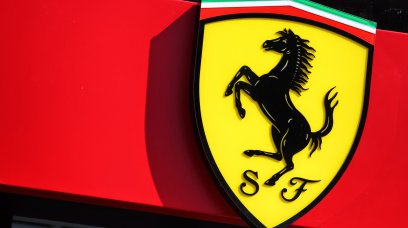Ferrari introduced a new evolutionary aerodynamic package in Austria, as the team aim to reduce the gap to runaway championship leaders Red Bull. Firstly, their new front wing is characterised by a revised endplate profile, which are now rounded on the top edge in a particularly similar way to the Red Bull RB19. The final part of the flaps now connect to the endplate in a totally different way compared to the previous version. They now have a reduction of the chord of the flap ends to increase the 'outwash' effect, i.e. the deflection of turbulence outside the wheels.
However, this is not the most significant change. The floor is now characterised by a 'three-dimensional' design of the underlying Venturi channels, and is also delimited by newly designed vertical diverters. Specifically, these elements now no longer end at the leading edge of the floor, but extend forward with a rounded profile. As in the case of the front wing endplates, these elements clearly draw inspiration from the RB19. The main purpose of their reprofiling is to manage the flow at the inlet of the Venturi channels more effectively. It must be noted that, going upstream and downstream from the middle section of the floor, the new 'three-dimensional' design of the channels do not maintain continuous profiles. These varying profiles of the channels in fact cause changes to the speed and density of the air flow, which helps to avoid the triggering of the porpoising effect when the car is subjected to increased downforce levels. In essence, this should allow the SF-23 to adopt lower ride heights without triggering the aerodynamic jolts causing the unpredictable behaviour of the car that emerged in Spain with the previous version. In short, if the feedback on the track in Austria confirms the data collected during the recent filming day, a highly competitive path could finally open up for the SF-23.
Most read






